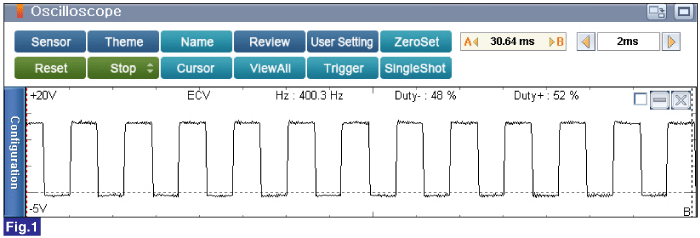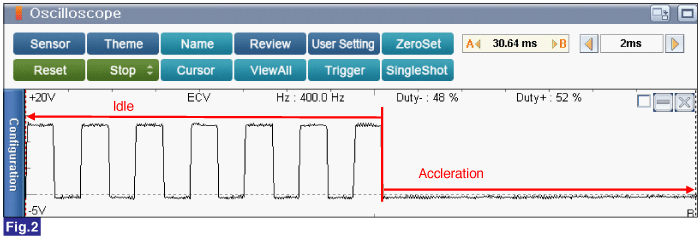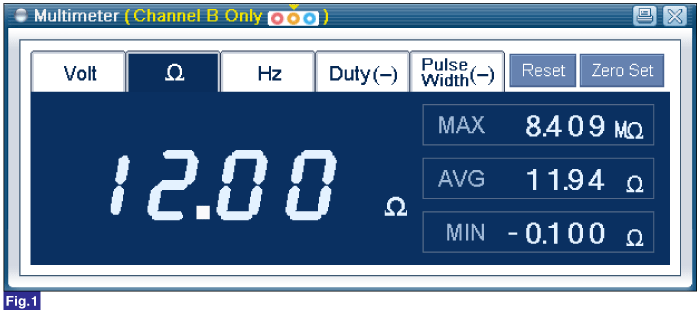Monitor ECV Control Duty when engine "ON" & idle, and Acceleration.


Fig.1) Normal ECV Duty on A/C "ON" and Engine Idle.
Fig.2) Normal ECV Duty on Engine Idle to Accleration.
Re-connect ECV connector.
Set-up the oscilloscope as mentioned below.
Channel A (+): ECV Power Terminal , Channel A (-) : Chassis Ground
Monitor ECV Control Duty when engine "ON" & idle, and Acceleration.


Fig.1) Normal ECV Duty on A/C "ON" and Engine Idle.
Fig.2) Normal ECV Duty on Engine Idle to Accleration.
Is measured value within specification?
 | ▶ Fault might be intermittent and caused either by poor contact in connectors or wiring harness, or it has been repaired and control module memory is not cleared yet. Thoroughly check terminal of battery, all connectors ( and connections) for looseness, bending, corrosion, contamination, deterioration, and/or damage. ▶ Repair or replace as necessary and then go to "Verification of Vehicle Repair" procedure. |
 | ▶ Go to next procedure. |
Ignition "OFF"
Disconnect Battery (-) terminal.
Disconnect ECV connector.
Measure resistance Pin No. (+) terminal and Pin No. (-) terminal of ECV.
Specification : Approx. 12 Ω

Fig.1) Actual Vehicle Test Data of ECV Resistance.
Is measured value within specification?
 | ▶ Fault might be intermittent and caused either by poor contact in connectors or wiring harness, or it has been repaired and control module memory is not cleared yet. Thoroughly check terminal of battery, all connectors ( and connections) for looseness, bending, corrosion, contamination, deterioration, and/or damage. ▶ Repair or replace as necessary and then go to "Verification of Vehicle Repair" procedure. |
 | ▶ Carefully re-do this troubleshooting guide steps. ▶ If problem still occurs, replace ECV and then go to "Verification of Vechicle Repair" procedure. |